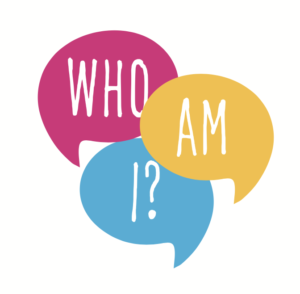 When you write a memoir, you place yourself as a “character” in your story. At the heart of any story is someone struggling with a problem, and how they change. In the case of memoir, that someone is you.
When you write a memoir, you place yourself as a “character” in your story. At the heart of any story is someone struggling with a problem, and how they change. In the case of memoir, that someone is you.
There are several aspects to being the protagonist of your own story:
- You have a longing or a need.
- There is some kind of wound or problem.
- There is an opposing force to solving the problem.
A protagonist presents a persona. This does not imply it’s false, simply that you’re not required to put everything in your memoir just because it happened.
The reason we love stories is because we identify with the characters, particularly the protagonist. We’re all voyeurs—we want to know how others live, how they solve the problems of life. The struggle you’re taking on in your memoir will undoubtedly be deeply personal—such as overcoming an illness, struggling with mental health, or surviving tragic loss. Sometimes the struggle is an adventure—a sports challenge, an exotic vacation, or a move to another country.
Your themes will help to determine the arc of the story, but the protagonist is the hero or heroine regardless of how your story unfolds. It’s through the experience and insights of the protagonist—you—that we readers vicariously pick up tips about life along the way.
There are two aspects to the journey:
- The plot—the “what happened” layer of the story.
- The inner struggle—the way the protagonist wrestles with the meaning of the events that occurred.
In all stories, whether memoir or fiction, the reader eagerly follows the inner life of the protagonist, the place where the heart beats and tears flow, the place where laughter is born and where the grit and determination is revealed.
Consider the following 5 ways you can develop your character-self in your memoir:
- Stand back and see yourself objectively. Yes, memoir is a very subjective genre, but as writers, we need to reveal the important characters fully, offer a 360 degree view. This includes the physical—how you look, what you wear, how you inhabit the world in your body.
- Look at a photograph of yourself at different ages and write about that “character” as if you have just met him or her for the first time. What does she look like? What attitude does he have as he encounters the camera? Is she shy or bold? Does he like to dance or stay home and read a book. Make a list of characteristics you know about yourself and keep adding to the list as you write. Writing a memoir also leads us on a journey of self-discovery.
- Consider your wants and desires in your story. Your whole book will include the arc of how you searched to find or solve those desires, and that will involve showing the obstacles you encountered on your way to getting what you wanted. This is conflict—the engine purring in the center of every story that keeps a reader turning the pages. Every story—and memoir—has conflict, tension, and ultimately a resolution.
- Sketch out your wants and desires over a three-part arc—beginning, middle, and end. Even if the details of the middle and end are not yet clear, beginning this process will allow you to sort through your memories and clarify what the core of your story will be. Searching for clarity about wants, conflicts, and possible resolution helps to form the structure of your memoir.
- Consider the specific turning points in your story that embody your desires. The Big Moments in our memoir are about conflict—a need or desire that has not been fulfilled, and our search to solve that problem. There are two journeys in memoir—the outer journey will show these Big Moments to the reader while the inner journey will show how we try to make sense of these experiences.
Story is meaningful because it helps us make sense of confusion, the mess of life. We may not fully solve our problems in life, or in the memoir, but the effort to understand, perhaps even to forgive or let go of the past, is a universal struggle. Your readers will identify with that and see themselves in you when you tend to your protagonist well. The protagonist is the lens, the guide to this journey. Through your eyes, your reader can experience transformation.
We invite you to join us for THE MAGIC OF MEMOIR, starting April 5, 2022, and going 6 consecutive Tuesdays. Your teachers will be:
 • Kiese Laymon, author of Heavy, teaching on YOUR CAST
• Kiese Laymon, author of Heavy, teaching on YOUR CAST
• Ashley C. Ford, author of Somebody’s Daughter, teaching on YOUR PROTAGONIST
• Joshua Mohr, author of Model Citizen, teaching on YOUR ARC
• Anna Qu, author of Made in China, teaching on YOUR CONFLICT
• Linda Joy Myers, co-leader of this program and author of Song of the Plains, teaching on YOUR MESSAGE
• And me, Brooke Warner, co-leader of this program and author of Write On, Sisters!, teaching on YOUR LENS
The course is $249, everything is recorded.
REGISTRATION DETAILS AT www.MagicOfMemoir.com
Speak Your Mind